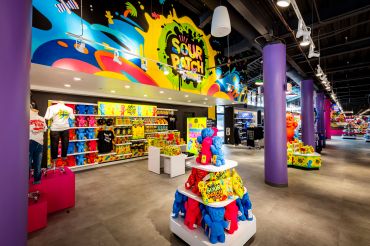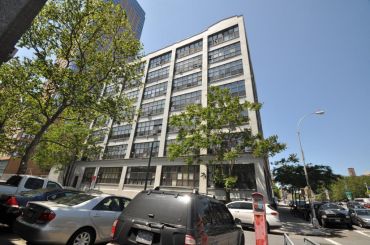What were some of the first design elements or amenities that clients left behind because of the recession?
One of the first that people are very careful of is furniture. If you say that a third of the project is furniture, that’s a big number. So the question is, ‘O.K., if there are X dollars to build my space, and maybe it’s Y to design it a certain way,’ well, you have that option, but you also have the whole issue with the furniture. Do I want to spend $35 a foot to buy all the furniture, or should I take my existing furniture? I would say the past two years, that has been the part where almost every kind of client has looked very carefully at what they would keep and what they would replace.
Any kind of must-have building material that everybody is asking for right now?
No. I think the must-have is really up-to-date lighting that’s energy-efficient, ceilings that have good acoustical value, and carpeting that will last for 10 years-even though in most cases styles change before those 10 years.
What do you make of the trend toward glass walls?
The trend over the past few years is also to glass walls. We have glass walls. I would say the way we are today-although I’m wearing a tie-but people are more casual, whether it’s the way one dresses or acts. People are more casual, and the space is more casual than it used to be. So we’ve always had glass walls in our offices, but I would say that 80 percent of our clients will have glass walls because they feel, ‘What is it, really, that you need to hide?’ Other than someone who’s the president or head of HR, there usually is no reason for full privacy, and I would find that most people are happier to have the glass for many reasons: for that reason, and also having the light penetrate so the space is bright and the employees overall get light.
Are you seeing that casual design from industry to industry, or are there some professions that are sluggish when it comes to integrating new design?
I can’t think of any that say, ‘We really want to have closed walls,’ right now. I would say the slowest would be the law firms because they’re usually very high-end people. Certainly, the partners. But typically those have been closed offices, but those are starting to open, if not fully, at least partially. But in the financial area, it’s been open for a long time, whether it be private equity or hedge funds.
You just moved into your new office space. Why did you decide to go green?
The green started a few years ago. We moved in December 2008, so we planned the office a year before that, so it’s a while back already. I think it has to start somewhere. It has to start with us. If we’re not portraying what’s right in the industry and with what’s out there, then we’re doing something wrong. So we started with the glass. We have harvesting with the lighting fixtures that can go brighter. We have the shade treatments. We have the materials we use that are green. We went to manufacturers who are local. And that’s all important. A lot of our clients have gone this way, too-not all of them because of cost, but many of them.
This is still very much a family business, right?
It’s still very much a family business; however, I must say we have senior associates in the office that really grab what they need to do and run with it, and that’s the only way we operate. It’s not like the old days. What I would say is that we’re one large extended family over here, and I think they feel that way.
So, MKDA recently observed its 50th anniversary. Still partying?
Well, we’re heading into 51. The party is still in the planning stage because we’ve been busy taking care of our clients. We will sometime in the year 2010 get our celebration out.
jsederstrom@observer.com


